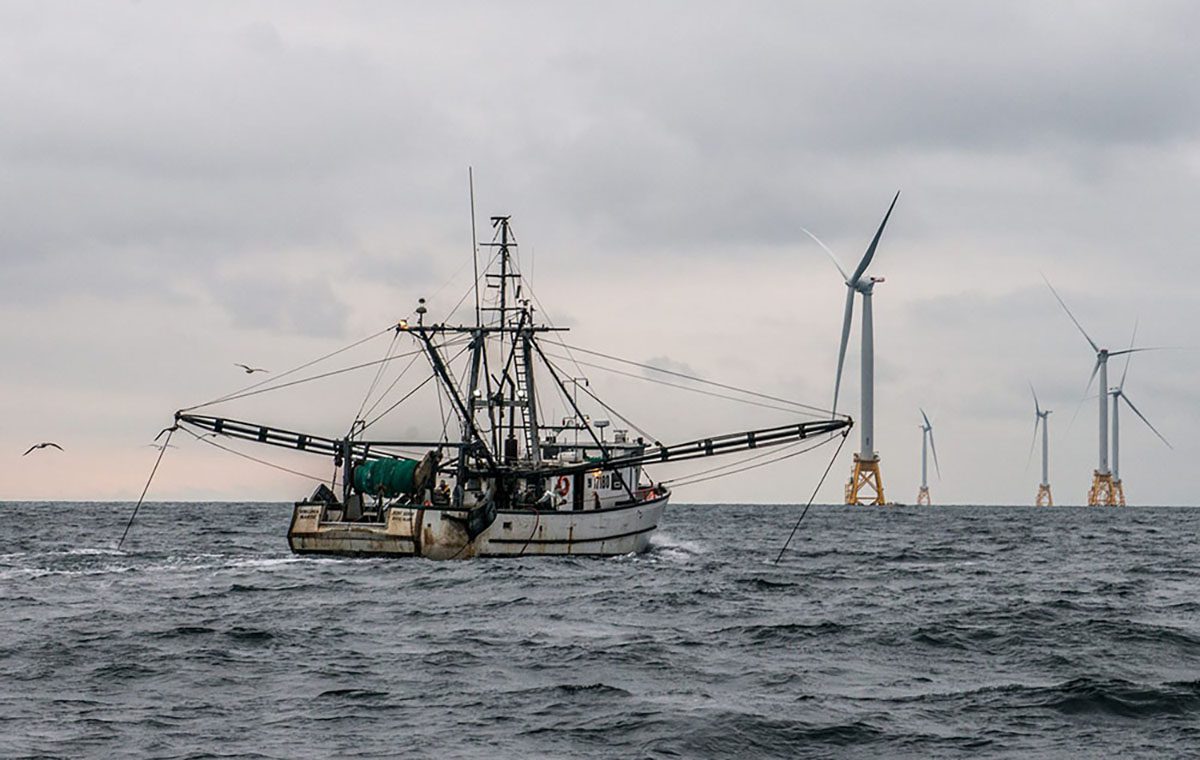
WILMINGTON – North Carolina has joined nearly a dozen other East Coast states to create a financial compensation program that would cover economic losses within the fisheries industry caused by Atlantic offshore wind development.
The Fisheries Mitigation Project aims to establish a regional administrator to oversee the process of reviewing claims and making payouts collected through a fund paid for by wind developers to commercial and for-hire recreational fisheries industries to mitigate financial loss associated with offshore wind farms.
Supporter Spotlight
Kris Ohleth, director of the Special Initiative on Offshore Wind, or SIOW, explained in a telephone interview that the process would operate like that of an insurance claim.
“The regional fund administrator would hold the money, they would accept the claims and evaluate the claims for eligibility and appropriateness and then make a payment to the fisherman based on that claim,” she said.
North Carolina last month became the 11th state to join the project, one of several headed by SIOW.
North Carolina Assistant Secretary for Clean Energy Economic Development Jennifer Mundt said in an emailed statement that the regional initiative “will develop consistent, fair, and transparent compensatory mitigation and compensation procedures.”
Offshore wind development represents a potential $100 billion economic investment and tens of thousands of jobs in the state, she said. Lease areas have been purchased off the state’s coasts of Kitty Hawk and Brunswick County.
Supporter Spotlight
“It’s important that we work together to responsibly develop offshore wind in North Carolina so that this new industry augments our existing industries, like the fishing industry,” Mundt said. “We understand that fisheries resources don’t recognize government jurisdictions or the boundaries of a wind energy area. It’s important that we have a consistent compensation structure that works for the entire region.”
The Fisheries Mitigation Project officially kicked off a couple of years ago in an effort to curtail what had so far been a project-by-project, state-by-state approach to address fisheries mitigation from offshore wind development.
Those methods did not work in the cases of South Fork Wind, New York’s first 12-turbine offshore wind farm expected to be operational by year’s end, or for what will be the country’s first commercial-scale offshore wind farm, Vineyard Wind, off the Massachusetts coast.
“Each of those processes arguably went pretty badly for all the stakeholders involved,” Ohleth said. “The fishermen did not feel that there was consistency or transparency kind of across those projects. They weren’t happy with the outcomes. They weren’t happy with the process. The developers were unhappy, the states were unhappy, essentially no one was happy with how it went.”
New York and Massachusetts are among the states that have joined the project. Maine, New Hampshire, Rhode Island, Connecticut, New Jersey, Delaware, Maryland and Virginia also are on board.
Protecting their assets
The goal first and foremost of the states is to ensure wind energy areas and the cable systems that will run from wind farms to land are developed in way that would result in minimal impacts to the fisheries industry.
Kevin Smith, principal engineering geologist with Furgo’s Norfolk, Virginia, office, explained how the Netherlands-based company uses geodata to create mitigative-based designs for offshore wind farms that minimize impacts across industries, including shipping, fisheries and the military.
Speaking at the Global Marine Science Summit hosted last month by the University of North Carolina Wilmington’s Center for Marine Science, Smith said offshore wind developers benefit from proactively reducing the chances of incurring what can result in expensive and time-consuming mishaps.
Damaged cables represent the No. 1 insurance claim of offshore wind developments, he said.
Cables cost about $1 million per kilometer, or a little more than a half-mile. It can take 40 to 60 days to repair a cable.
The average cost to repair an inter-array cable, which links individual wind turbines to a substation at sea, ranges between $1.8 million and $12 million.
Repairing an export cable that transmits electricity from a sea-based substation to the shore can cost an average of $10-$30 million, Smith said.
Site surveys of wind energy areas take up to five years and include a cable route study, cable burial risk assessment and burial feasibility study.
Site surveys of wind energy areas take up to five years.
The route of array cables from offshore wind areas south of Bald Head Island in Brunswick County has not been determined, but recreational fishermen in the area remain concerned about the possible impacts of installing monopile wind towers and burying cables on the hardbottom habitat.
Cane Faircloth, a fishing charter captain from Holden Beach and member of the North Carolina For-Hire Captains Association, said local fishermen are the best source to guide planners designing cable systems.
“They’re just trying to sell (offshore wind development) to the fishermen, and we need them to understand that we need partners that are going to listen to us and our concerns and work with us to try to mitigate these issues that we’re going to be facing,” he said.
That North Carolina has joined the Fisheries Mitigation Project, “does say that, ‘Hey, they are listening somewhat,’ and I guess they do realize that there are going to be repercussions,” Faircloth said. “I’m glad that the state is open to taking part in it. Communities are going to be affected, and we need to make sure that we try to mitigate this as good as possible and not just give the wind industry a blank canvas to do whatever they want here because this is our home, and we live in a special place. Let’s try not to mess it up.”
There’s also a concern about insurance.
“What we’ve found with a lot of insurance companies is they don’t cover you if you go into a wind farm area,” Faircloth said. “That’s a big red flag for everybody.”
A spokesman for the North Carolina Department of Insurance said boating insurance policies do not fall under standardized contracts.
“If and how an insurance company offers coverage would fall under the underwriting guidelines of each company,” Barry Smith, the department’s deputy director of communications, said in an email. “We’d recommend boat owners shop around to get the appropriate coverage.”
Such coverage may not yet exist in the United States because the need does not yet exist.
“It’s just all too new and I’ve never even thought about it before,” said Gordon Lay, underwriting manager of ocean marine insurance with Century Insurance Group of Westerville, Ohio.
Developing a mitigation plan
Two working groups — a governance working group and a procurement working group — created by the states are working now on writing a request to solicit proposals from prospective regional fund administrators.
Stakeholders from the states, fishing communities and developers are working together to draft a regional funding program to be released by the New York State Energy Research and Development Authority.
The goal is to release the draft in July.
The firm hired to be the regional administrator will report to the New York State Energy Research and Development Authority because that state volunteered to take on the role of procurement.
“Overall though (the administrator will) be working for some type of governing structure that has yet to be defined that’s comprised of the 11 states, fishermen and the offshore wind developers in collaboration,” Ohleth said.
What remains unclear now is if the money for the program is paid to the Bureau of Ocean Management, or BOEM, whether those funds may be transferred out of the general treasury.
“We’ll have to figure out exactly how those monies would be transferred in a legal and appropriate way,” Ohleth said.
Gov. Roy Cooper has set a goal for offshore wind to generate 2.8 gigawatts of electricity by 2030 and 8 GW by 2040, enough to power some 2 million homes.







